三年级《快乐英语阅读》unit2The lantern for others教案
- 格式:doc
- 大小:36.00 KB
- 文档页数:2
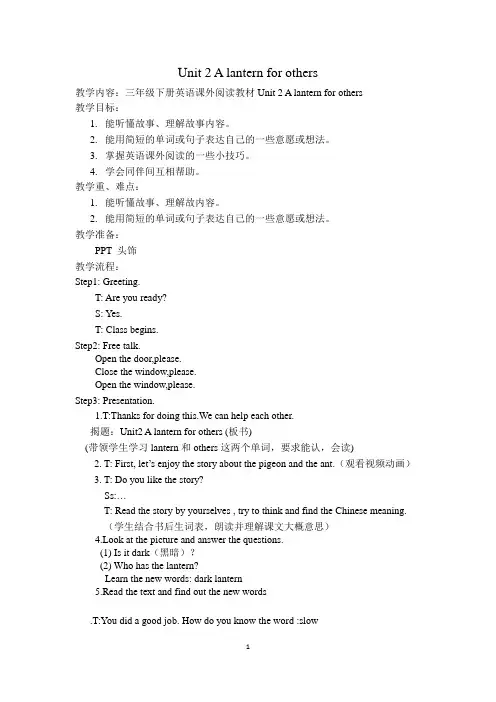
Unit 2 A lantern for others教学内容:三年级下册英语课外阅读教材Unit 2 A lantern for others教学目标:1.能听懂故事、理解故事内容。
2.能用简短的单词或句子表达自己的一些意愿或想法。
3.掌握英语课外阅读的一些小技巧。
4.学会同伴间互相帮助。
教学重、难点:1.能听懂故事、理解故内容。
2.能用简短的单词或句子表达自己的一些意愿或想法。
教学准备:PPT 头饰教学流程:Step1: Greeting.T: Are you ready?S: Yes.T: Class begins.Step2: Free talk.Open the door,please.Close the window,please.Open the window,please.Step3: Presentation.1.T:Thanks for doing this.We can help each other.揭题:Unit2 A lantern for others (板书)(带领学生学习lantern和others这两个单词,要求能认,会读)2. T: First, let’s enjoy the story about the pigeon and the ant.(观看视频动画)3. T: Do you like the story?Ss:…T: Read the story by yourselves , try to think and find the Chinese meaning.(学生结合书后生词表,朗读并理解课文大概意思)4.Look at the picture and answer the questions.(1) Is it dark(黑暗)?(2) Who has the lantern?Learn the new words: dark lantern5.Read the text and find out the new words.T:You did a good job. How do you know the word :slowS1: …S2: …T总结:Reading tips阅读中,遇到生词,我们可以: 1. 查生词表。
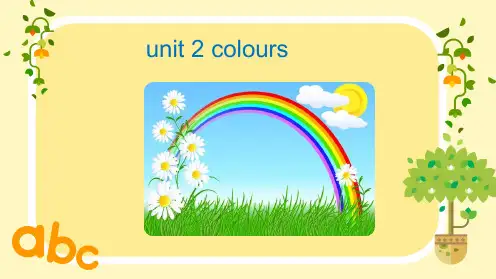
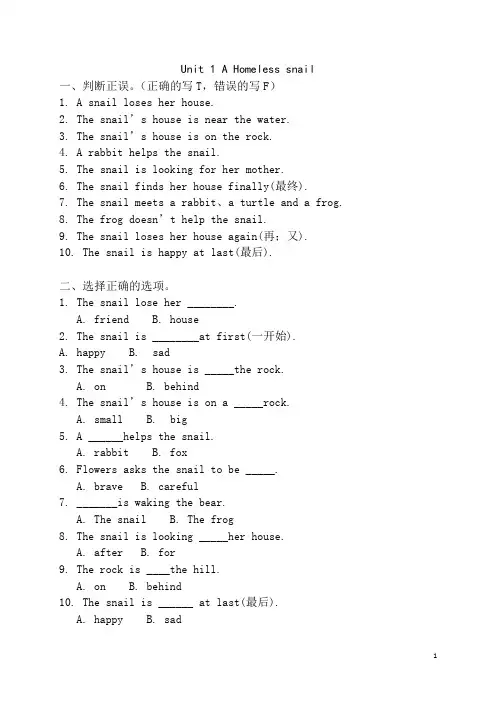
Unit 1 A Homeless snail一、判断正误。
(正确的写T,错误的写F)1. A snail loses her house.2. The snail’s house is near the water.3. The snail’s house is on the rock.4. A rabbit helps the snail.5. The snail is looking for her mother.6. The snail finds her house finally(最终).7. The snail meets a rabbit、a turtle and a frog.8. The frog doesn’t help the snail.9. The snail loses her house again(再;又).10. The snail is happy at last(最后).二、选择正确的选项。
1. The snail lose her ________.A. friendB. house2. The snail is ________at first(一开始).A. happyB. sad3. The snail’s house is _____the rock.A. onB. behind4. The snail’s house is on a _____rock.A. smallB. big5. A ______helps the snail.A. rabbitB. fox6. Flowers asks the snail to be _____.A. braveB. careful7. _______is waking the bear.A. The snailB. The frog8. The snail is looking _____her house.A. afterB. for9. The rock is ____the hill.A. onB. behind10. The snail is ______ at last(最后).A. happyB. sadUnit 2 A LANTERN FOR OTHERS一、判断(正确T错误F)。

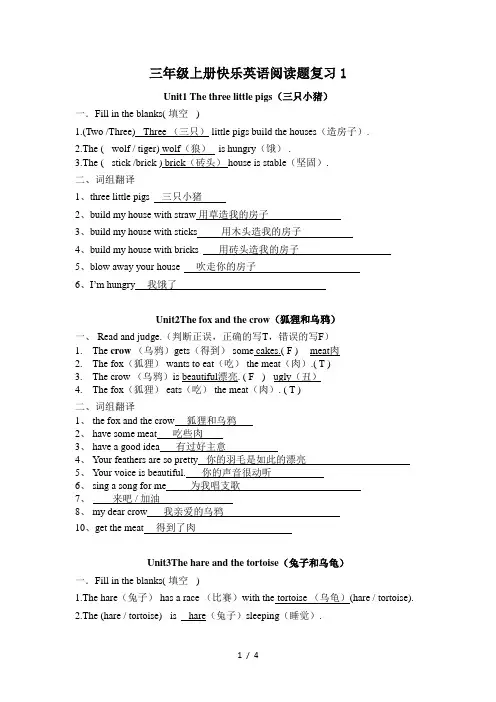
三年级上册快乐英语阅读题复习1Unit1 The three little pigs(三只小猪)一.Fill in the blanks( 填空)1.(Two /Three) Three (三只) little pigs build the houses(造房子).2.The ( wolf / tiger) wolf(狼)is hungry(饿) .3.The ( stick /brick ) brick(砖头) house is stable(坚固).二、词组翻译1、three little pigs 三只小猪2、build my house with straw 用草造我的房子3、build my house with sticks 用木头造我的房子4、build my house with bricks 用砖头造我的房子5、blow away your house 吹走你的房子6、I’m hungry我饿了Unit2The fox and the crow(狐狸和乌鸦)一、 Read and judge.(判断正误,正确的写T,错误的写F)1.The crow(乌鸦)gets(得到) some cakes.( F ) meat肉2.The fox(狐狸) wants to eat(吃) the meat(肉).( T )3.The crow (乌鸦)is beautiful漂亮. ( F ) ugly(丑)4.The fox(狐狸) eats(吃) the meat(肉). ( T )二、词组翻译1、the fox and the crow 狐狸和乌鸦2、have some meat 吃些肉3、have a good idea 有过好主意4、Your feathers are so pretty 你的羽毛是如此的漂亮5、Your voice is beautiful. 你的声音很动听6、sing a song for me 为我唱支歌7、来吧 / 加油8、my dear crow 我亲爱的乌鸦10、get the meat 得到了肉Unit3The hare and the tortoise(兔子和乌龟)一.Fill in the blanks( 填空)1.The hare(兔子) has a race (比赛)with the tortoise (乌龟)(hare / tortoise).2.The (hare / tortoise) is hare(兔子)sleeping(睡觉).3.The winner(赢家) of the race is the tortoise(乌龟)(hare / tortoise).二、 Read and judge.(判断正误,正确的写T,错误的写F)1.The hare (兔子)can run fast(跑得快).( T )2.The tortoise(乌龟) runs slowly(跑得慢). ( T )3.The hare(兔子)win (赢)the race(比赛). ( F) tortoise (乌龟)三、搭配,把英文序号填在前面的括号内.(C)1.hare A 准备(H)2.tortoise B 慢的(A)3.ready C兔子(D)4.have a rest D休息一下(E)5.I win the race E 我赢了比赛(B)6.Slow F 睡觉(F)7.Sleep G 停下(G)8.Stop H 乌龟Unit4The pigeon and the ant(鸽子和蚂蚁)一.Fill in the blanks( 填空)1.The ant 蚂蚁(ant/pigeon) is thirsty(渴).1.The pigeon(鸽子) gives 给the ant(蚂蚁) a leaf叶子(flower/ leaf).2.The ant(蚂蚁) bites(咬) hunter猎人(hunter/pigeon).二、翻译词组1、t he pigeon and the ant 鸽子和蚂蚁2、I t’s hot. 天很热3、I feel thirsty. 我感到渴了4、w ant some water 想要些水5、d rink some water 喝些水6、I can’t swim.我不会游泳7、h old the leaf 抓住叶子8、s hoot that pigeon down 射下那只鸽子9、h elp the pigeon 帮助鸽子10、fly away 飞走Unit5The wind and the sun一、 Read and judge.(判断正误,正确的写T,错误的写F)1.The wind makes(让) the man take off (摘下) his cat. ( F)2.The sun is strong. ( T)二、翻译词组1.the wind and the sun 风和太阳2.I’m strong我很强壮3.blow away his hat 吹走他的帽子4.make a bet 打赌5.take off 脱下6.give up 放弃7.It’s too hot天太热Unit6 The grateful eagle一、词组搭配,把英文序号填在前面的括号内.( B )1.the grateful eagle A那声音( A )2.that noise B 感恩的老鹰( D )3.my house C 倒下( C )4.fall down D我的房子(F )5 let me help you E你救了我( E)6.You saved me F让我帮你二、选择( B )1.The farmer saved theA. duckB. eagleC. bird( A )2.The eagle took away the farmer’sA. hatB. gloves (手套)C.T-shirt( B )3.The fell down suddenly.(突然)A. deskB. houseC. chairUnit7 The Little Ridding Hood一、词组翻译1. the Little Ridding Hood 小红帽2.a lovely girl 一个可爱的女孩3.all right 还好,好的4.Grandma is ill 奶奶病了5.I can hear you 我能听见你6.your eyes 你的眼睛7.your ears 你的耳朵8.your mouth 你的嘴9.go away 走开10.I’m fine我很好二、Read and judge.(判断正误,正确的写T,错误的写F)1.The Little Ridding Hood goes to see her grandma.( T)2.The wolf wants to eat the Little Ridding Hood. ( T )3.The Little Ridding Hood sees her grandma in bed. ( F )4. The Little Ridding Hood and Grandma are saved. (T )Unit8The Little Match Girl一、词组搭配( A ) 1.The Little Match Girl A 卖火柴的小女孩(D )2. a Christmas Eve B没有人( B) 3.nobody C买火柴(C) 4.buy matches D圣诞夜( I)5. a warm stove E圣诞树(F) 6.roast goose F烤鹅(H ) 7.die G第二天早上( G )8. the next morning H死亡( E) 9.a Christmas tree I温暖的火炉二、Read and judge.(判断正误,正确的写T,错误的写F)1. The Little Match Girl is cold and hungry.(T)2.A man buys some matches.(F )3. The Little Match Girl eats the cake.( F )4. The Little Match Girl sees her grandma.(F)5. The Little Match Girl died.( T )。
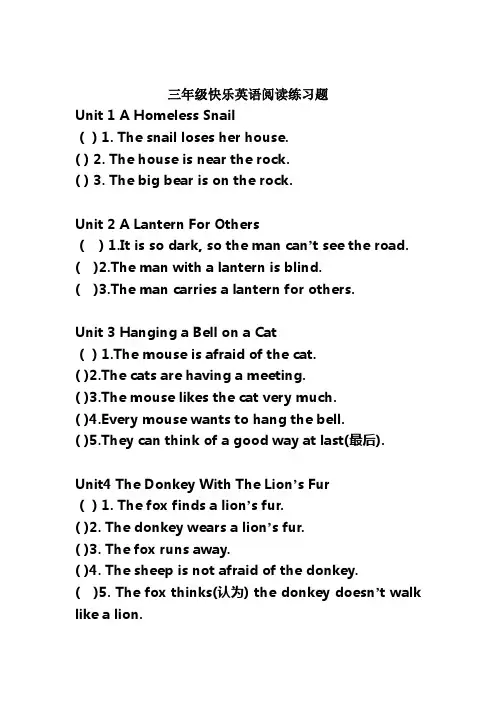
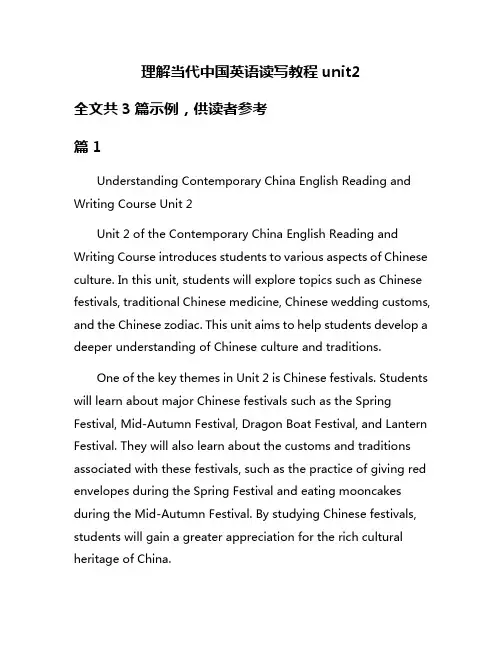
理解当代中国英语读写教程unit2全文共3篇示例,供读者参考篇1Understanding Contemporary China English Reading and Writing Course Unit 2Unit 2 of the Contemporary China English Reading and Writing Course introduces students to various aspects of Chinese culture. In this unit, students will explore topics such as Chinese festivals, traditional Chinese medicine, Chinese wedding customs, and the Chinese zodiac. This unit aims to help students develop a deeper understanding of Chinese culture and traditions.One of the key themes in Unit 2 is Chinese festivals. Students will learn about major Chinese festivals such as the Spring Festival, Mid-Autumn Festival, Dragon Boat Festival, and Lantern Festival. They will also learn about the customs and traditions associated with these festivals, such as the practice of giving red envelopes during the Spring Festival and eating mooncakes during the Mid-Autumn Festival. By studying Chinese festivals, students will gain a greater appreciation for the rich cultural heritage of China.Another important topic in Unit 2 is traditional Chinese medicine. Students will learn about the principles of traditional Chinese medicine, including the concept of qi (vital energy) and the use of acupuncture and herbal medicine to promote health and well-being. They will also explore the role of traditional Chinese medicine in Chinese society and its impact on modern medicine.Unit 2 also covers Chinese wedding customs, giving students an insight into the traditional customs and rituals that are observed during Chinese weddings. Students will learn about the traditional Chinese wedding ceremony, the significance of the tea ceremony, and the customs surrounding the exchange of gifts between the bride and groom's families. By studying Chinese wedding customs, students will gain a better understanding of the importance of family and tradition in Chinese culture.Finally, Unit 2 introduces students to the Chinese zodiac, a system of astrology that is based on a twelve-year cycle. Students will learn about the twelve animal signs of the Chinese zodiac and their corresponding characteristics, as well as the significance of the zodiac in Chinese culture. By studying the Chinese zodiac, students will gain a better understanding of howChinese people view themselves and others based on their birth year.Overall, Unit 2 of the Contemporary China English Reading and Writing Course offers students a comprehensive introduction to various aspects of Chinese culture. By exploring topics such as Chinese festivals, traditional Chinese medicine, Chinese wedding customs, and the Chinese zodiac, students will develop a deeper understanding of the cultural and historical influences that shape modern China. This unit will not only help students improve their English reading and writing skills but also broaden their knowledge of Chinese culture and traditions.篇2Understanding Contemporary China is a key textbook for students studying Chinese culture and society. Unit 2 of this textbook focuses on the history and development of China's economy, providing students with a comprehensive overview of the country's transformation into a global economic powerhouse.The unit begins with an introduction to China's economic reform and opening-up policy initiated by Deng Xiaoping in the late 1970s. This policy marked a significant shift from a plannedeconomy to a market-oriented one, leading to rapid economic growth and industrialization. Students learn about key economic reforms such as the establishment of Special Economic Zones, the privatization of state-owned enterprises, and the liberalization of trade and investment.The unit also covers China's integration into the global economy, with a particular focus on its accession to the World Trade Organization in 2001. Students are introduced to the challenges and opportunities that come with China's status as the world's largest trading nation, including issues related to intellectual property rights, labor rights, and environmental sustainability.In addition to its economic growth, the unit also explores the social impacts of China's economic transformation. Students learn about the rise of a new middle class, increasing income inequality, and the rural-urban wealth gap. They also examine the impact of economic development on traditional Chinese values and cultural practices.Overall, Unit 2 of Understanding Contemporary China provides students with a comprehensive understanding of China's economic development and its implications for society. By studying this unit, students gain valuable insights into thechallenges and opportunities facing China as it continues to assert its influence on the global stage.篇3Understanding Contemporary Chinese English Reading and Writing Course Unit 2Unit 2 of the Contemporary Chinese English Reading and Writing Course focuses on developing students' vocabulary and reading skills, with a special emphasis on understanding and analyzing different types of texts. This unit aims to help students become proficient readers and writers of the English language by building their vocabulary and teaching them how to effectively analyze and comprehend a variety of texts.One of the key goals of this unit is to improve students' ability to identify and understand different genres of texts, such as narratives, expository texts, and argumentative texts. By studying examples of each type of text and learning how to analyze their structure, language, and content, students can develop a better understanding of how different types of texts are constructed and how to effectively read and interpret them.In addition, Unit 2 also focuses on expanding students' vocabulary through the study of word families, synonyms,antonyms, and collocations. By learning how words relate to each other and how they are used in different contexts, students can improve their ability to understand and use a wider range of vocabulary in their reading and writing.Furthermore, the unit teaches students how to effectively use context clues and other strategies to infer the meaning of unfamiliar words while reading. By practicing these skills, students can become more confident readers and be better equipped to handle challenging texts.Overall, Unit 2 of the Contemporary Chinese English Reading and Writing Course is designed to help students develop their vocabulary and reading skills while also teaching them how to analyze and understand different types of texts. By mastering the skills and techniques taught in this unit, students can become more proficient readers and writers of the English language.。
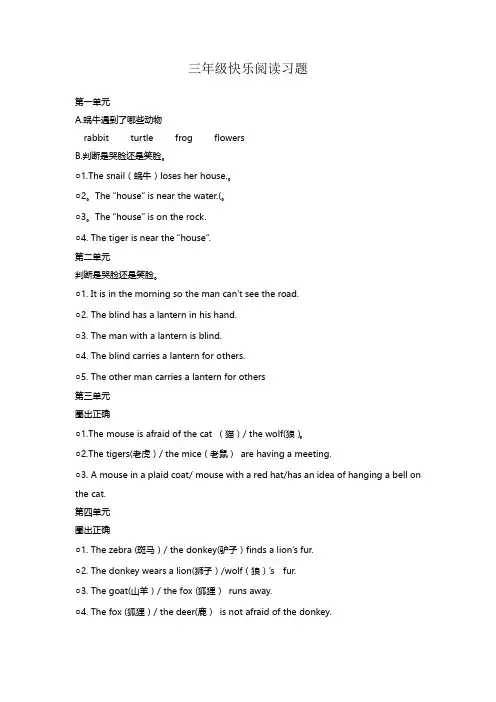
三年级快乐阅读习题第一单元A.蜗牛遇到了哪些动物rabbit turtle frog flowersB.判断是哭脸还是笑脸。
○1.The snail(蜗牛)loses her house.。
○2。
The “house” is near the water.(。
○3。
The “house” is on the rock.○4. The tiger is near the “house”.第二单元判断是哭脸还是笑脸。
○1. It is in the morning so the man can’t see the road.○2. The blind has a lantern in his hand.○3. The man with a lantern is blind.○4. The blind carries a lantern for others.○5. The other man carries a lantern for others第三单元圈出正确○1.The mouse is afraid of the cat (猫)/ the wolf(狼)。
○2.The tigers(老虎)/ the mice(老鼠)are having a meeting.○3. A mouse in a plaid coat/ mouse with a red hat/has an idea of hanging a bell on the cat.第四单元圈出正确○1. The zebra (斑马)/ the donkey(驴子)finds a lion’s fur.○2. The donkey wears a lion(狮子)/wolf(狼)’s fur.○3. The goat(山羊)/ the fox (狐狸)runs away.○4. The fox (狐狸)/ the deer(鹿)is not afraid of the donkey.。
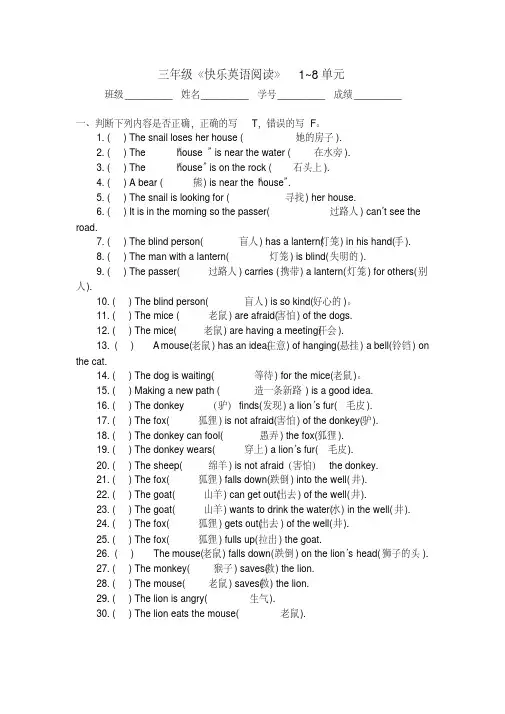
三年级《快乐英语阅读》1~8单元班级_________ 姓名_________ 学号_________ 成绩_________一、判断下列内容是否正确,正确的写T,错误的写F。
1. ( ) The snail loses her house ( 她的房子).2. ( ) The “house ” is near the water (在水旁).3. ( ) The “house” is on the rock (石头上).4. ( ) A bear (熊) is near the “house”.5. ( ) The snail is looking for (寻找) her house.6. ( ) It is in the morning so the passer( 过路人) can’t see the road.7. ( ) The blind person(盲人) has a lantern(灯笼) in his hand(手).8. ( ) The man with a lantern(灯笼) is blind(失明的).9. ( ) The passer(过路人) carries (携带) a lantern(灯笼) for others(别人).10. ( ) The blind person(盲人) is so kind(好心的)。
11. ( ) The mice (老鼠) are afraid(害怕) of the dogs.12. ( ) The mice(老鼠) are having a meeting(开会).13. ( ) A mouse(老鼠) has an idea(主意) of hanging(悬挂) a bell(铃铛) on the cat.14. ( ) The dog is waiting(等待) for the mice(老鼠)。
15. ( ) Making a new path (造一条新路) is a good idea.16. ( ) The donkey(驴)finds(发现) a lion’s fur(毛皮).17. ( ) The fox(狐狸) is not afraid(害怕) of the donkey(驴).18. ( ) The donkey can fool(愚弄) the fox(狐狸).19. ( ) The donkey wears(穿上) a lion’s fur(毛皮).20. ( ) The sheep(绵羊) is not afraid(害怕)the donkey.21. ( ) The fox(狐狸) falls down(跌倒) into the well(井).22. ( ) The goat(山羊) can get out(出去) of the well(井).23. ( ) The goat(山羊) wants to drink the water(水) in the well(井).24. ( ) The fox(狐狸) gets out(出去) of the well(井).25. ( ) The fox(狐狸) fulls up(拉出) the goat.26. ( ) The mouse(老鼠) falls down(跌倒) on the lion’s head(狮子的头).27. ( ) The monkey(猴子) saves(救) the lion.28. ( ) The mouse(老鼠) saves(救) the lion.29. ( ) The lion is angry(生气).30. ( ) The lion eats the mouse(老鼠).31. ( ) The lion is greedy(贪婪的).32. ( ) The lion eats a deer(鹿) for dinner.33. ( ) The lion eats a rabbit(兔子) for dinner.34. ( ) The lion loses(丢失) the rabbit(兔子).35. ( ) The lion lose(丢失)s the deer(鹿).36. ( ) The baby crab walks(走) sideways(横向的).37. ( ) The mother crab can walks(走) straight(笔直的).38. ( ) The mother crab is proud(骄傲的).39. ( ) Bobby is in(穿着) Tina’s dress(连衣裙).40. ( ) Bobby is late(迟到) for school(学校) today(今天).二、选择题( )1.The snail(蜗牛) meets_______.A. a rabbit(兔子)B. a tiger(老虎)( )2. The snail is looking for(寻找) her ______. A. house(房子) B. friends( )3. The house is on the ______. A. treeB. rock(石头)( ) 4.A big ______is on the rock(石头). A. bear(熊)B. fox(狐狸)( )5.A ____loses(丢失) her house. A. pig B. snail(蜗牛)( )6.It’s so dark(黑暗的). I _____see the road(路).A. can(能)B. can’t(不能)( )7.The blind person(盲人) has a ______ in his hand(手).A. lantern(灯笼)B. umbrella(伞)( )8.The man with a lantern(灯笼) is _____.A. blindB. bright( )9.The blind person(盲人) carries(携带) a lantern(灯笼) for ______.A. himself(他自己)B. others(别人)( )10.The blind person(盲人) is ______A. kind(好心的)B. greedy (贪婪的)( )11.Hang(悬挂) a bell(铃铛) on the cat’s_____.A. neck(脖子)B. foot(脚)( )12.The mice(老鼠) are afraid of the _____. A. dog B. cat( )13.The ______are having a meeting(开会). A. mice B. dogs( )14.The butterfly (蝴蝶) is ______.A. on Tina’s dress(连衣裙)B. behind the chair( )15.It is a ______ fur(皮毛). A. lion’s(狮子的) B. tiger’s(老虎的( )16. A______ finds(发现) a lion’s fur(狮子的皮毛).A. fox(狐狸)B. donkey(驴)( ) 17.The donkey wears a ______ fur(毛皮). A. lion’s(狮子的) B.tiger’s(老虎的)( ) 18. The _____is not afraid of the donkey. A. fox(狐狸)B. sheep(绵羊)( ) 19.The _____is afraid(害怕) of the donkey. A. fox(狐狸) B. sheep(绵羊)( )20.The _____runs away(跑走). A. sheep(绵羊) B. fox(狐狸)( )21.The _____ falls down(跌倒) into the well(井). A. lion B. fox ( )22.The _____wants to drink the water(水) in the well(井).A. foxB. goat(山羊)( )23.The _____gets out(出去) of the well(井). A. fox B. goat(山羊)( ) 24.Stand on my ______, fox. A. head(头) B. back(背)( ) 25.The goat is ______. A. silly(愚蠢的) B. clever(聪明的)( )26.Today(今天) is ______.It’s not for school(学校).A.Saturday(星期六)B. Friday(星期五)( ) 27.It’s eight o’clock .It’s time for______. A.classB. lunch( ) 28.The lion is ______. A. thirsty(口渴) B. angry( ) 29.The mouse falls down on the _____head(头).A. l ion’s(狮子的)B. tiger’s(老虎的)( ) 30.The _____ saves(救) the lion. A. tiger(老虎) B. mouse(老鼠)( ) 31.T he mouse is ______. A. grateful(感恩的) B.silly(愚蠢的)( ) 32.The lion is______. A. hungry(饥饿的) B. cold(冷的)( )33.The lion wants to catch(抓住) the _____for his dinner.A. tiger(老虎)B. deer(鹿)( )34.The ______ is sleeping(睡着的). A. rabbit(兔子) B. sheep(绵羊)( )35.The______ is too greedy(太贪婪).A. fox(狐狸) B.lion( ) 36.Bobby is in Tina’s______. A. skirt B. dress(连衣裙)( ) 37. ______ is in Tina’s dress. A. Sam B. Bobby( )38. The crabs walk(走) ______. A. sideways(横向的) B. straight(笔直的)( ) 39. The lion wants to eat_____. A. rabbit( 兔子) B. tiger(老虎)( ) 40.The lion is too_______. A. greedy(贪婪的) B.grateful(感恩的)三、选词填空。

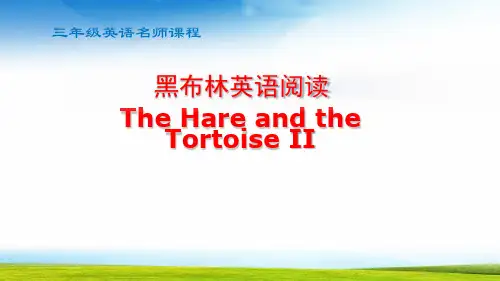
Unit 2 A lantern for others教学目标:1. 能听懂、会读、会说单词lantern, others, dark, slow, hill, because, blind, carry, kind.2. 能听懂、会读、会说句子why do you carry a lantern? Who can help me?3. 能在老师的动作和图片的帮助下,理解课文。
教学重点:1.能听懂、会读、会说单词lantern, others, dark, slow, hill, because, blind,carry, kind.2. 能听懂、会读、会说句子why do you carry a lantern? Who can help me?3. 能在老师的动作和图片的帮助下,理解课文。
教学难点:能在理解课文的基础上表演课文。
教学过程:Step1: Greeting.Step2: Free talk.Step3: Presentation.1.T:Thanks for doing this. We can help each other.揭题:Unit2 A lantern for others (板书)(带领学生学习lantern 和others 这两个单词,要求能认,会读)2. T: First, let’ s enjoy the story about the pigeon and the ant.(观看视频动画)3. T: Do you like the story? Ss:…T: Read the story by yourselves , try to think and find the Chinese meaning. (学生结合书后生词表,朗读并理解课文大概意思)4.Look at the picture and answer the questions.(1) Is it dark(黑暗)?(2) Who has the lantern?Learn the new words: dark lantern5.Read the text and find out the new words.T: You did a good job. How do you know the word :slowS1: …S2: …T 总结:Reading tips阅读中,遇到生词,我们可以:1. 查生词表。
Unit 2 A lantern for others
教学内容:三年级下册英语课外阅读教材Unit 2 A lantern for others
教学目标:
1.能听懂故事、理解故事内容。
2.能用简短的单词或句子表达自己的一些意愿或想法。
3.掌握英语课外阅读的一些小技巧。
4.学会同伴间互相帮助。
教学重、难点:
1.能听懂故事、理解故内容。
2.能用简短的单词或句子表达自己的一些意愿或想法。
教学准备:
PPT 头饰
教学流程:
Step1: Greeting.
T: Are you ready?
S: Yes.
T: Class begins.
Step2: Free talk.
Open the door,please.
Close the window,please.
Open the window,please.
Step3: Presentation.
1.T:Thanks for doing this.We can help each other.
揭题:Unit2 A lantern for others (板书)
(带领学生学习lantern和others这两个单词,要求能认,会读)
2. T: First, let’s enjoy the story about the pigeon and the ant.(观看视频动画)
3. T: Do you like the story?
Ss:…
T: Read the story by yourselves , try to think and find the Chinese meaning.
(学生结合书后生词表,朗读并理解课文大概意思)
4.Look at the picture and answer the questions.
(1) Is it dark(黑暗)?
(2) Who has the lantern?
Learn the new words: dark lantern
5.Read the text and find out the new words
.T:You did a good job. How do you know the word :slow
S1: …
S2: …
T总结:Reading tips
阅读中,遇到生词,我们可以: 1. 查生词表。
2. 读课文图片,猜词义。
3. 询问老师。
……
6.Learn the new words: others,wait for,slow,because,blind,carry,kind.
Underline the new words.
7.Try to read them using your own ways.
8.The blind can’t see the road.Why is he walking with a lantern?
Let’s talk about.
Read :I carry this lantern to help others in the dark.
After listening that,what do the man do? The man:Let me carry your lantern.Be careful.We’ll go together.
Step4: Consolidation
1. Read the story after the tape, one sentence by one sentence.
2. Read and judge.
a.It is in the moring so the man can’t see the road.
b.The blind has a lantern in his hand.
c.The man with a lantern is blin
d.
d.The man carries a lantern for others.
d.What do you learn from the story
3. Act the story.
4.What do you learn from the story
Step5: Homework.
1. Read and act the story after class
2. Take notes.。